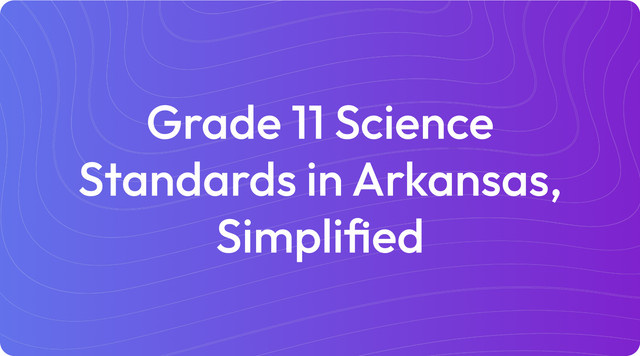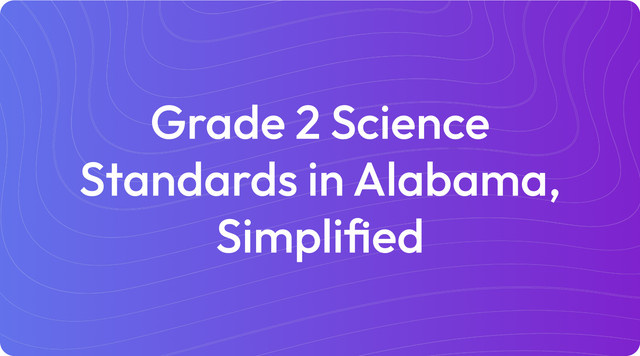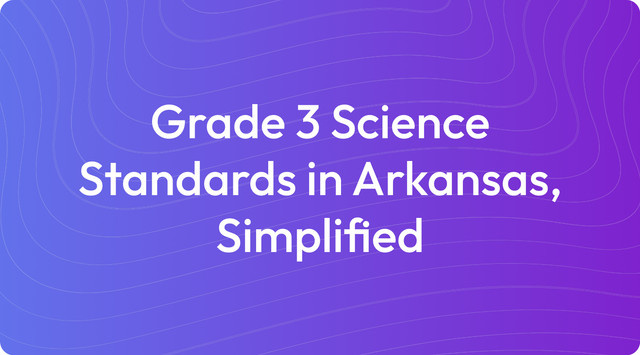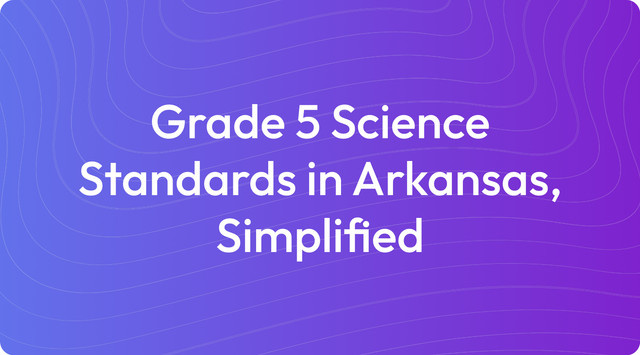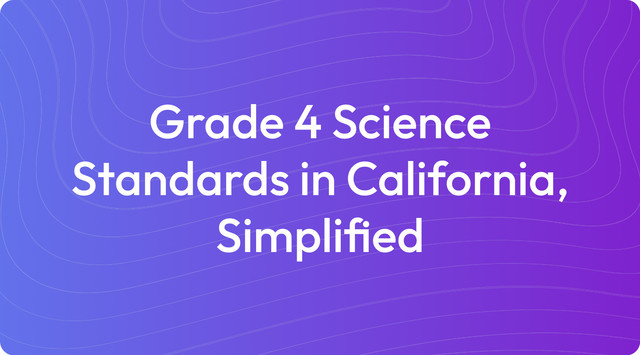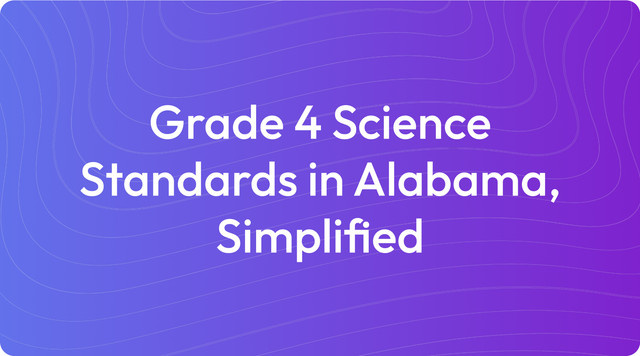Grade 1 Science Standards in Alaska, Simplified
Grade 1 science standards in Alaska cover light, sound, body systems, and space patterns. Discover easy standards—read more on TeachShare!
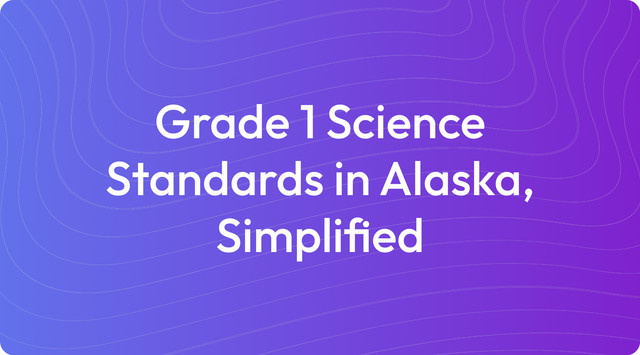
Understanding education standards is a key part of curriculum planning, but translating them into practical classroom activities can be a challenge. We recognize that you need clear, accessible resources to bridge the gap between state guidelines and your daily instruction. Our goal is to provide tools that help you effectively connect standards to your lesson plans.
Education standards are learning goals that outline what students should know and be able to do at each grade level. For teachers, they provide a clear framework for instruction without dictating specific teaching methods, giving you professional autonomy. For example, Alaska's first-grade science standards require students to investigate light and sound, but you decide on the specific experiments and activities that best fit your classroom.
What Are Grade 1 Science Standards in Alaska?
The Grade 1 Science Standards in Alaska are based on the state's science standards, which are adapted from the Next Generation Science Standards (NGSS). These standards integrate Life Science, Physical Science, Earth and Space Science, and Engineering Design, with a focus on foundational exploration and inquiry-based learning. Here is a detailed overview of the standards:
Physical Science (PS)
- Standard 1-PS4-1: Investigate how different materials allow light and sound to travel.
- Standard 1-PS4-2: Make observations to determine the effect of different materials on the path of light.
- Standard 1-PS4-4: Use tools and materials to design a device that uses light or sound to communicate over a distance.
Life Science (LS)
- Standard 1-LS1-1: Use materials to design a solution that helps plants or animals meet their needs.
- Standard 1-LS1-2: Read texts and use media to determine how animals use their external parts to survive, grow, and meet their needs.
Earth and Space Science (ESS)
- Standard 1-ESS1-1: Use observations of the sun, moon, and stars to describe patterns that can be predicted.
- Standard 1-ESS1-2: Make observations at different times of year to relate the amount of daylight to the time of year.
Engineering Design (ETS)
- Standard K-2-ETS1-1: Ask questions, make observations, and gather information to define a problem that can be solved through engineering.
- Standard K-2-ETS1-2: Develop a simple sketch, drawing, or model to illustrate how something works.
- Standard K-2-ETS1-3: Analyze data from tests of objects or tools to determine which solution works best.
Summary of Key Skills for Grade 1 Science in Alaska
- Observation and Inquiry: Students observe natural phenomena like patterns in the sky or how animals survive in their environment.
- Hands-On Problem-Solving: Students design and test simple models, such as tools for communication or animal habitats.
- Connection to the Alaskan Environment: Focus on daylight patterns, habitats, and local ecosystems to make science relevant to students’ lives.
The framework for these standards is guided by the Next Generation Science Standards and resources from the Alaska Department of Education.
Key Tested Standards
The Grade 1 Science Standards for Alaska focus on building foundational skills across key scientific disciplines. While the official Alaska Science Assessment is for older students, these standards form the basis for local assessments and are crucial for future scientific learning. Here are the core tested standards for Grade 1, which emphasize observation, hands-on exploration, and inquiry-based learning.
1. Physical Science (PS): Light and Sound
- Standard 1-PS4-1: Plan and conduct investigations to provide evidence that vibrating materials can make sound and that sound can make materials vibrate.
- Why It’s Key: This standard introduces the fundamental concept of sound energy, helping students connect the idea of sound waves to the tangible action of vibrations.
- Standard 1-PS4-2: Make observations to determine the effect of placing objects made of different materials in the path of a beam of light.
- Why It’s Key: It encourages exploration of how light interacts with different materials, laying the groundwork for understanding properties like transparency, translucency, and opacity.
- Standard 1-PS4-4: Use tools and materials to design and build a device that uses light or sound to communicate over a distance.
- Why It’s Key: This standard integrates engineering design with physical science, prompting students to apply their knowledge creatively to solve a practical problem.
2. Life Science (LS): Plants and Animals
- Standard 1-LS1-1: Use materials to design a solution that mimics how plants and animals use their external parts to survive, grow, and meet their needs.
- Why It’s Key: This develops an understanding of adaptation by connecting an organism's physical traits to its survival within an environment.
- Standard 1-LS1-2: Read texts and use media to determine patterns in behavior of parents and offspring that help offspring survive.
- Why It’s Key: Students learn how animals care for their young, building an early understanding of survival, life cycles, and inherited behaviors.
3. Earth and Space Science (ESS): Patterns in Nature
- Standard 1-ESS1-1: Use observations of the sun, moon, and stars to describe patterns that can be predicted.
- Why It’s Key: This standard introduces students to celestial patterns and predictable cycles, such as day and night, which fosters core observational skills.
- Standard 1-ESS1-2: Make observations at different times of year to relate the amount of daylight to the time of year.
- Why It’s Key: This is particularly relevant in Alaska, where daylight changes dramatically by season, connecting science concepts directly to students' lives.
4. Engineering Design (ETS): Problem-Solving
- Standard K-2-ETS1-1: Ask questions, make observations, and gather information to define a simple problem that can be solved through the development of a new or improved object or tool.
- Why It’s Key: This introduces students to the first step of the engineering design process and encourages creative thinking and problem identification.
- Standard K-2-ETS1-2: Develop a simple sketch, drawing, or model to illustrate how the shape of an object helps it function as needed to solve a given problem.
- Why It’s Key: Students begin to understand the critical relationship between an object's form and its function by visualizing their solutions.
Why These Standards Are Key for Testing
These standards are pivotal for assessment because they evaluate a student's ability to:
- Observe and describe patterns, such as how the sun moves in the sky or how animals care for their young
- Conduct investigations, like exploring how vibrations create sound or how objects affect light
- Design and build solutions to simple, tangible problems
- Analyze and interpret data from their own explorations
Source: Alaska Department of Education & Early Development, Next Generation Science Standards
Example Learning Objectives for Unit Planning
Learning objectives translate broad standards into clear, student-centered goals for a specific lesson or unit. They define what a student should be able to do by the end of an instructional period, making learning targets transparent for both you and your students. These objectives are often written as "I can" statements to help students take ownership of their learning.
To help you connect these standards to your classroom, here are some example learning objectives written in student-friendly language:
Physical Science (PS): Light and Sound
Objectives for this unit focus on the properties of sound and light:
- I can investigate how vibrations make sound and how sound can make objects vibrate.
- I can observe how light behaves when it passes through different materials.
- I can design and build a tool that uses light or sound to send a message.
Life Science (LS): Plants and Animals
In this area, students explore how living things survive:
- I can explain how animals use their body parts to survive in their environment.
- I can describe how animals take care of their babies to help them survive.
- I can design a simple model of a shelter or tool that helps an animal or plant meet its needs.
Earth and Space Science (ESS): Patterns in Nature
These objectives guide students to observe predictable patterns in the world around them:
- I can observe and describe patterns of the sun, moon, and stars.
- I can explain how the amount of daylight changes during different times of the year.
- I can keep a journal to track the position of the sun at different times of the day.
Engineering Design (ETS): Solving Problems
For engineering, the focus is on the design process and creative problem-solving:
- I can ask questions and use observations to figure out a problem I want to solve.
- I can draw a picture or build a model to show my solution to a problem.
- I can test my idea and change it to make it better.
Key Changes & Updates
The latest updates to Alaska's Grade 1 Science Standards shift the focus toward more dynamic, hands-on learning. There is a greater emphasis on inquiry-based exploration, where students are encouraged to ask questions and investigate natural phenomena directly. This approach is integrated with early engineering practices, asking young learners to design and test simple solutions to problems. Instead of just learning facts, students will now explore concepts like how vibrations create sound or how different materials affect light through practical activities, building a stronger, more intuitive understanding of science.
These changes are designed to make science more relevant and engaging for your students by connecting concepts to their immediate environment. The standards now specifically incorporate phenomena unique to Alaska, such as the dramatic seasonal changes in daylight and local ecosystems. By observing patterns in nature and applying scientific principles to real-world scenarios, students develop critical thinking and problem-solving abilities. This updated framework also integrates literacy and math skills, as students record observations and communicate their findings, creating a solid foundation for future learning in STEM fields.
Create with TeachShare
We understand that adapting to these updated standards while managing your daily workload can be demanding. Our platform is designed to help you create engaging, standards-aligned lessons and activities quickly, giving you more time to focus on what you do best: teaching. We provide the tools to turn these new requirements into rich, hands-on learning experiences for your students. Start creating standards-aligned instructional resources with TeachShare now.
Frequently Asked Questions
What are the main topics covered in Grade 1 Science in Alaska?
First-grade science in Alaska introduces students to core concepts across several key areas:
- Physical Science: Exploring light and sound, such as how vibrations create noise and how light interacts with different objects.
- Life Science: Understanding how plants and animals meet their needs to survive, including their unique adaptations and behaviors.
- Earth and Space Science: Observing patterns of the sun, moon, and stars, and learning how daylight changes throughout the year.
- Engineering Design: Applying scientific knowledge to design and test simple solutions to problems, like building a shelter.
What’s unique about the Alaska Grade 1 Science Standards?
The standards are specifically adapted to be meaningful within the Alaskan context, focusing on:
- Local Relevance: The curriculum highlights Alaska’s distinct daylight patterns, such as the long summer days and short winter days.
- Real-World Connections: Learning is connected to local examples, like how Alaskan animals adapt with fur or hibernation to survive in their environment.
- Inquiry-Based Learning: There is a strong emphasis on hands-on exploration, observation, and problem-solving to help students learn by doing.
How do these standards prepare students for future science learning?
These foundational standards help build essential skills that students will carry with them throughout their academic journey. For instance:
- Studying light and sound serves as an early introduction to the concept of energy, which is explored more deeply in later grades.
- Observing celestial patterns provides a base for future learning in Earth systems and space science.
- Engaging in simple engineering projects develops critical thinking and design skills, which are vital for all STEM fields.
How does engineering fit into the Grade 1 Science Standards?
Engineering is woven into the science curriculum to help students become creative and critical problem-solvers. In practice, students learn to:
- Ask questions to understand a problem, such as figuring out how to protect a plant from too much sun.
- Plan and build models to address the problem, like designing a simple birdhouse.
- Test their creations and think about how to improve their designs.
How can teachers make the standards engaging for Grade 1 students?
You can bring the science standards to life and spark curiosity in your first graders with a few key approaches:
- Use relatable, real-world examples, like discussing how local animals stay warm during an Alaskan winter.
- Incorporate hands-on activities that allow students to experiment directly with light, sound, and different materials.
- Foster curiosity by encouraging students to ask questions and wonder about the world around them.
- Use storytelling and visuals to explain complex topics like animal adaptations or patterns in space.
Answer


